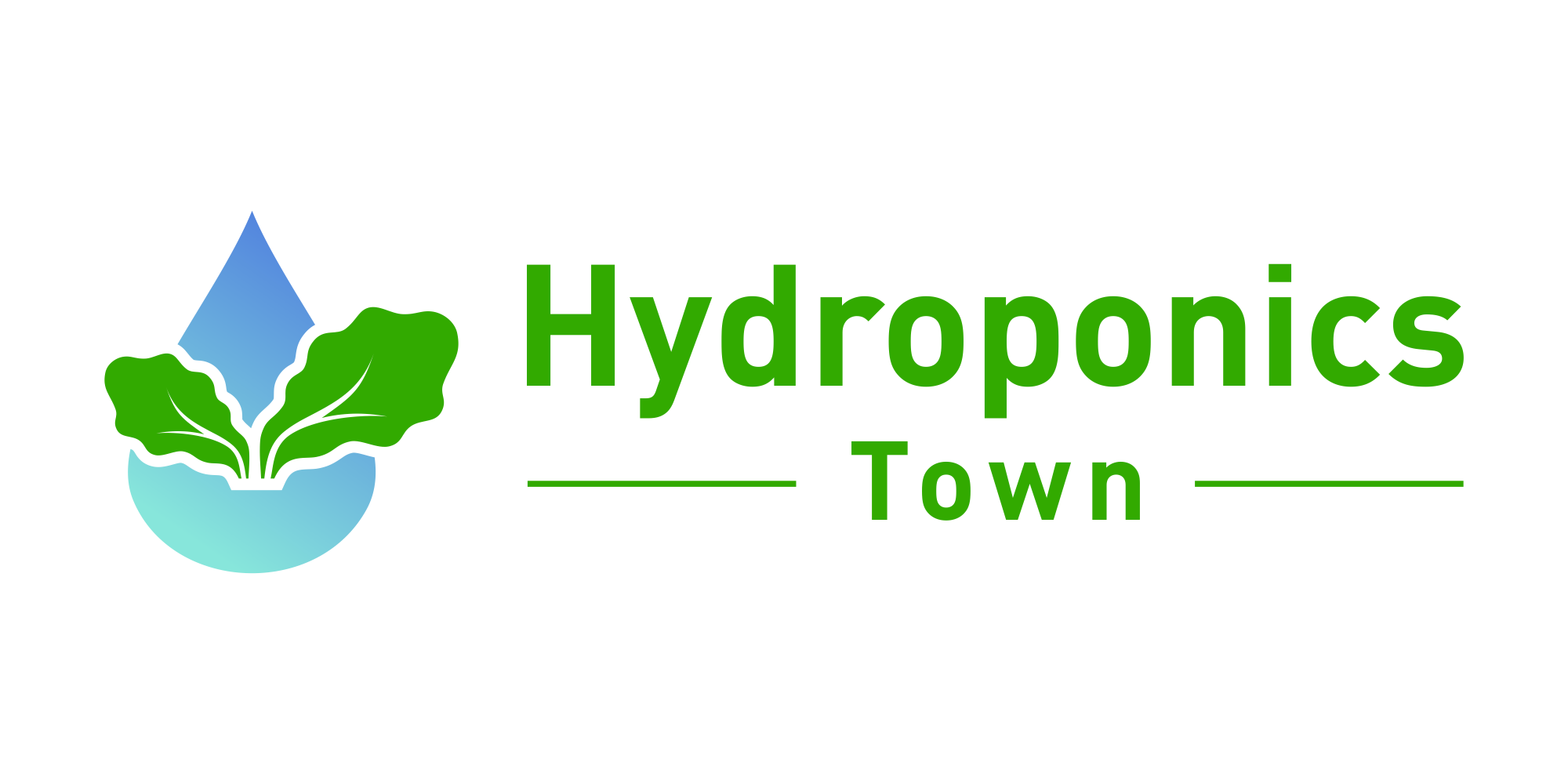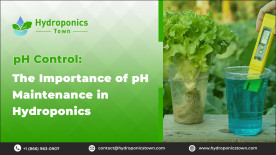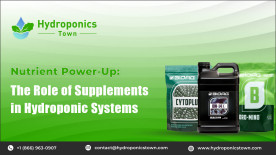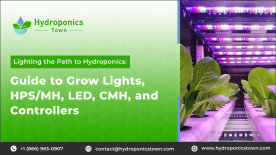pH control plays a pivotal role in the success of hydroponic cultivation. The pH level of the nutrient solution profoundly impacts the availability of essential nutrients to plants, directly influencing their growth, development, and overall health. Understanding and maintaining the optimal pH adjuster levels in hydroponic systems is crucial for unlocking the full potential of this innovative cultivation method. We'll look at the intricate relationship between pH and plant nutrition in hydroponics, delve into the impact of pH fluctuations on plant health, and uncover strategies for effectively managing pH levels to cultivate thriving and bountiful hydroponic crops.
Why is pH important in hydroponics?
pH, which measures a solution's acidity, or alkalinity, is essential for plant growth. It influences nutrient availability, enzymatic activity, and microbial populations in the root zone. Maintaining the correct pH level is essential for optimal nutrient uptake and avoiding deficiencies or toxicities that can hinder plant growth. pH directly influences the availability of essential nutrients for plants. Inaccurate pH levels can hinder nutrient uptake, leading to nutrient deficiencies or imbalances that can harm plant growth and development. Hydroponic growers use pH meters or colorimetric test kits to monitor pH levels regularly. Consistent monitoring enables timely modifications, ensuring that the nutrition solution maintains the required pH range. Factors such as nutrient uptake, evaporation, and nutrient solution replenishment can cause pH fluctuations in hydroponic systems. To maintain stability, growers should adjust pH levels as needed to prevent adverse effects on plant health. Before adding nutrients, it's essential to test the water's pH and adjust it if necessary to create an optimal environment for plant growth.
What are the ideal pH ranges for plant growth?
The pH scale ranges from 0 to 14, with 7 considered neutral. In hydroponics, the pH of the nutrient solution affects the solubility and availability of essential nutrients. At different pH levels, the solubility of certain organic nutrientsvaries. For instance, some nutrients are more readily available in slightly acidic conditions, while others are better absorbed in a slightly alkaline environment.
The ideal pH range for hydroponic systems typically falls between 5.5 and 6.5. This range provides a suitable environment for nutrient absorption, as most hydroponic plants thrive in slightly acidic to neutral conditions. Monitoring and adjusting pH levels within this range is crucial to ensuring that plants can access nutrients efficiently and maintain robust growth and development.
pH monitoring and testing in hydroponic systems
pH test for hydroponics solution methods and pH nutrient charts are available for measuring pH in hydroponic solutions, including
General hydroponics pH control kit: These kits typically contain pH test strips, liquid reagents, and a color pH chart for hydroponics to determine.
pH meters: Digital pH meters offer precise and accurate pH measurements, providing real-time data on the pH of the nutrient solution.
Frequency of pH testing and monitoring: Regular pH testing and monitoring are essential for maintaining optimal pH levels in hydroponic systems. It is recommended to test the pH of the nutrient solution at least once a day, preferably before the first feeding time, to identify any deviations from the desired pH range
Interpretation of pH test results and adjustments needed: When interpreting pH test results, adjustments are required if the pH deviates from the ideal range of 5.5 to 6.5.
To lower pH: Citric acid or phosphoric acid can be used to lower the pH of the solution.
To raise pH: Potassium hydroxide or potassium carbonate can be added. After making adjustments, it's important to retest the pH and continue monitoring to ensure the pH stabilizes within the optimal range.
pH adjustment techniques in hydroponic systems
Maintaining the optimal pH level for hydroponics systems is crucial for supporting healthy plant growth. Here are several effective pH adjustment techniques commonly used by hydroponic growers:
pH adjustment technique | Function | Usage |
general hydroponics ph up and ph down Solutions | Commercial products are formulated to raise or lower pH levels in the nutrient solution. | Provides precise control over pH levels and is widely used in hydroponic systems. |
Citric acid and ascorbic acid | Natural acids are used to lower pH levels in the nutrient solution. | Considered safe for plants and a popular choice for pH adjustment. |
Potassium hydroxide and sodium Bicarbonate | Chemicals are used to raise pH levels in the nutrient solution. | Effective in adjusting pH levels and commonly employed in hydroponics. |
Calcium hydroxide | Also known as hydrated lime, it is used to raise pH levels gradually. | Provides a gradual pH increase and is commonly used in hydroponic setups. |
Nutrient solution dilution | The indirect method involves diluting the nutrient solution with fresh water. | Adjusts pH levels by blending with water of different pH levels. |
Coconut coir and peat moss | Natural substances are added to the growing medium to buffer pH levels. | Contribute to pH stability in the root zone for long-term maintenance. |
Aeration and stirring | Promotes uniform distribution of acids and bases in the nutrient solution. | It helps stabilize pH levels by ensuring proper mixing |
Refer:13 Best Plants to Grow Hydroponically 2023
Factors affecting pH in hydroponic systems
Quality of water source and its initial pH: The quality of the water source used in hydroponic systems significantly impacts the initial pH of the nutrient solution. Water from different sources may have varying pH levels, and it's essential to test and adjust the water's pH before adding it to the nutrient solution.
Nutrient solution composition and its effect on pH: The composition of the nutrient solution can influence pH levels within hydroponic systems. The types and concentrations of nutrients added to the solution can alter its pH. For instance, high concentrations of certain nutrients may cause the solution to become more acidic or alkaline, necessitating pH adjustments.
Biological activity and nutrient uptake by plants: Biological activity and nutrient uptake by plants also play a role in pH fluctuations. As plants absorb nutrients from the solution, the availability of these nutrients can impact the pH levels. Additionally, microbial activity in the root zone can influence pH by mediating nutrient transformations, which affect the pH of the nutrient solution.
Checkout:How to Build a Hydroponic Garden A Step-by-Step Guide
Common pH problems and solutions
pH problem | Impact on plant health | Symptoms | Solutions |
Acidic nutrient solutions | Nutrient imbalances lead to deficiencies. | Yellowing leaves, slow growth, reduced flowering or fruiting. | Use pH Up solutions to gradually increase pH. Flush the system if issues persist. |
Alkaline nutrient solutions | Nutrient lockout, impairing nutrient uptake. | Nutrient toxicity, leaf tip burn, wilting. | Use pH Down solutions to lower pH cautiously. Monitor pH levels regularly. |
Maintaining pH levels is an important part of effective hydroponic gardening. Understanding how pH affects nutrient uptake, microbial activity, and overall plant health enables growers to establish an ideal environment for plant development and crop output. Regular monitoring, suitable testing methods, and timely modifications are required to keep the nutrient solution's pH within the optimal range. Growers may promote healthy hydroponic plants and obtain robust, high-yielding harvests by resolving pH imbalances as soon as possible and using effective pH for hydroponics adjustment procedures.
FAQs
How to Adjust pH in Water for Plants?
Use pH Up or general hydroponics pH up solutions to adjust the pH of water for plants.
How to Lower pH in Hydroponics?
Adding pH-down solutions with acidic components can lower the pH in hydroponics.
How to Raise pH in Hydroponics?
Incorporate pH solutions containing alkaline compounds to raise the pH in hydroponics.
What is pH Up?
pH Up is a solution used to increase the pH level of nutrient solutions in hydroponics.
How Much pH Up Per Gallon?
Follow the manufacturer's guidelines for the specific pH Up product; typically, start with small increments and pH adjuster testing results.

















